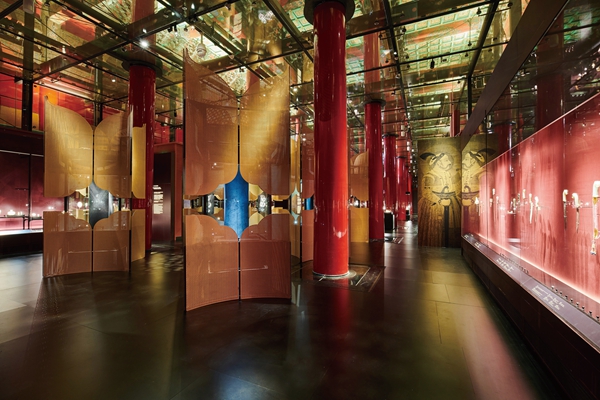
Site of exhibition
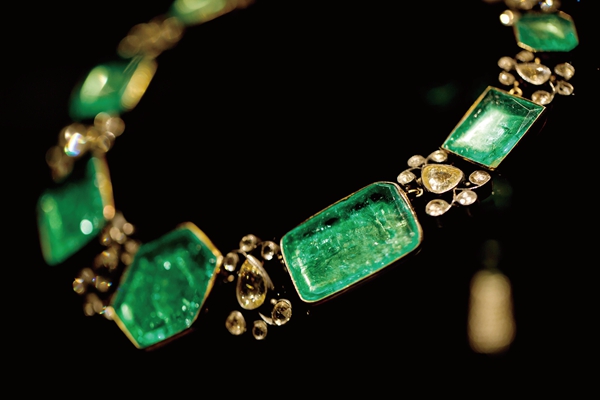
Emerald necklace
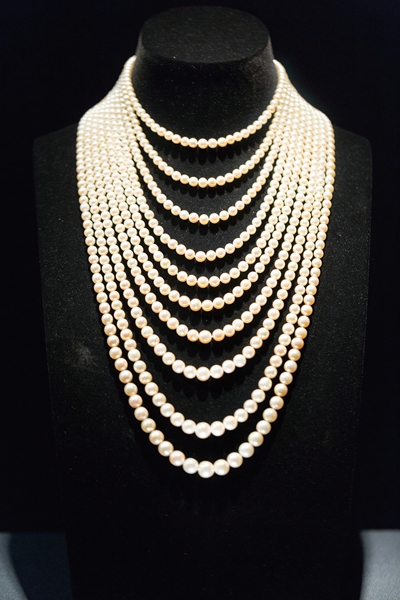
Pearl necklace
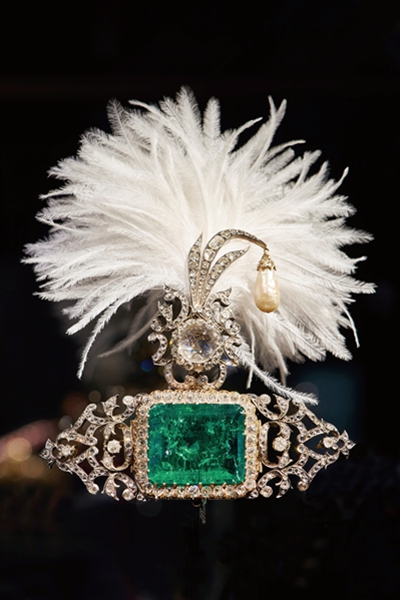
Headscarf accessories
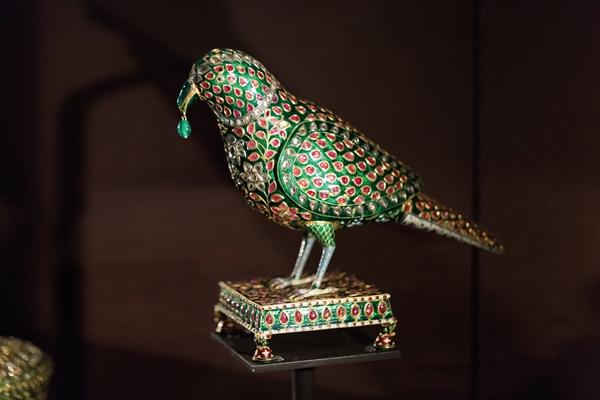
Parrot
From the ages of Genghis Khan and Timur to several well-known Indian monarchs, more than 270 jewelry masterpieces over five centuries led the audiences to explore the gemstone art and inspiration created in the South Asian subcontinent, showcasing 500 years of exquisite artwork and perfect handmade craftsmanship, the Treasures from The Al Thani Collection including such two major parts as Masterpieces from a Royal Collection and Gems and Jewels from India has been held at the Meridian Gallery and West Yanchi Building Showroom of the Palace Museum from April 17th to June 18th.
More than 280 pieces of art treasures of the Masterpieces from a Royal Collection cross the 5000-year domain of human civilization. The ancient treasures and the masterpieces of modern art are brought together to represent the pinnacle of artistic achievement worldwide.However, the most exciting moment for Amateurs like me is to witness the large jewels in "Gems and Jewels from India"!
The 270 pieces (set) of India's jewelry art featured in this collection exhibition presented the Indian jewelry art from the Mughal Empire to modern times.Amongst all the exhibits, there are a large number of eye-catching collections, including historical diamonds, imperial jeweled shells, royal emblems decorated by jewels, headscarf accessories, and the magnificent treasures for dukes and princes with the inspiration from Indian traditional jewelry styles from famous European.
The story of "Magnificent Stars" begins with the creation of the Mughal Empire.Hill Uddin Babur is a descendant of Timur and Genghis Khan. He arrived in India in 1526 to establish a generation of dynasties. Since then, the Mughal Empire has been inseparable from the collection of various precious stones.Mughal people mainly acquired gemstones through conquests and gifts for purchase. They have inherited the tradition of their ancestor Timur by engravingpeople’s names on the most precious stone and left it as an heirloom to the descendants of the dynasty.During the reign of Shah Jehan, the respect for jewelry was at its peak. Shah Jehanhas ordered to produce a brilliant throne made of enamel gold and was inlaid with diamonds, emeralds, spinels, rubies, and pearls.
Many of India's jewels in the exhibition use a special tessellation process that uses jewels set in gold without claws, but uses highly malleable pure gold foil to form a molecular chain-like mosaic around the jewels.According to reports, goldsmiths at that time could use a kind of iron needle to allow gold to be silky and satin-like to surround various kinds of precious stones, and fix the stones most firmly. This process means that Indian jewelry is usually a representative of seal inlaid.Unlike the West preferring to create symmetrical shapes, Indian jewelry retains the original size of the jewelry as much as possible.Another unique technique for Indian jewelry is the glazing process, which first appeared in the Mughal period. This technique might be inspired by the fine enamel jewelry of Renaissance.The Mughal jewelry processing method has formed the taste style of the entire South Asian subcontinent until the 18th century when Mughal Empire collapsed, but its well-established style has continued to linger.
In the 19th century, Indian fashion jewelry has been increasingly influenced by the West, especially in the style design, gemstone facets and inlaid pedestals. Western open-style grabbed pedestal was applied to fix the gems. While the Indian royal family was ruled the British colonists, it was deprived of all military and political power. Under such circumstances, power and status were increasingly embodied by wearing more luxurious jewelry.At the end of the 19th century, Indian dukes began to use platinum to replace gold as the most precious jewel in the base, and eventually adopted the mosaic style, which was most popular in Europe at that time.
In 1911, Jacques Cartier traveled to India with the hope of finding the newest gemstone customers and sources. During the visit, he continued to contact with the Indian royal family and brought a series of large orders to the company. The British and French jewelers represented by Cartier quickly began offering products and customized services to the royal family.At the same time, European jewelers also collected local works at the same time and re-installed or inlaid them to complement the exotic styles that were fashionable at the time. The unique aesthetic style of Indian jewelry has also initiated to inspire Western avant-garde jewelry creation. However in contemporary times, Indian jewelry has a unique shape and aspect compared with the geometric faceted gem that dominates the Western jewelry: Indian motifs, customized-cut flat diamonds and natural pearls, jewelry embedded in the hidden form of platinum hole.
"As the founder of the Al-Thani collection, people often asked why I would collect this series of collections. The collection of artworks stems from my passion for history and good subjects. At first my collection had only a few artworks. They not only look fascinating, but also have historical significance. The blend of aesthetics and history is often embodied in jewelry works." Master of Al-Thani collection, a member of Qatar royal family, His Highness Sheikh Hamad bin Abdullah Al Thani said.The history of jewelry may also be historyof geography---since the ancient times, India has gained worldwide reputation for its rich and rare gemstone deposits and exquisite jewelry making techniques. This jewelry culture tradition, to a certain extent, thanks to the natural environment - South Asia has long been the home of gems:the Deccan Plateau produces excellent diamonds, Kashmir generates dazzling sapphires, and Badakhshan is the source of precious spinel.In addition, people could also obtain sapphires and rubies from neighboring Sri Lanka and Burma and pearls from the Persian Gulf. After the discovery of Colombia’s emerald mines in South America, European merchants brought these emeralds to India through commercial trade.
The story of jewelry is also a story of culture--- Since the ancient times, the South Asian subcontinent exported spices and textiles to the East and the West in exchange for gold and silver. Precious metal was turned into a work of art by ingenuity of Indian craftsmen, reaching a very high artistic realm, and the industry has continued to live to this day.In India, jewels do not merely remain at the level of decoration. Each jewel is of far-reaching significance, symbolizes profound meaning, or aspires to auspicious horoscopes. In popular culture, there are certain styles of jewelry on interior decorations, dresses, weapons, and furniture, reflecting class, caste, region, marital status or wealth.














